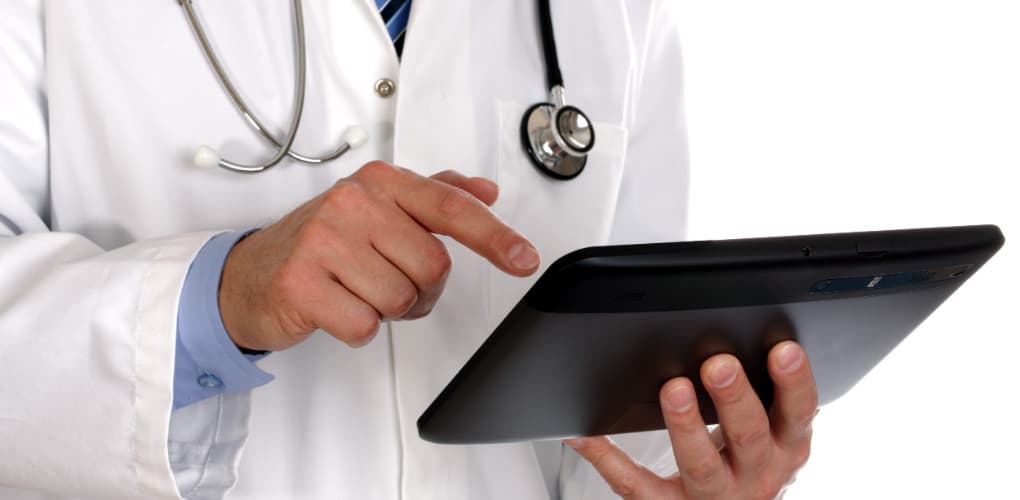< Back to Publications & Resources
Strategies to Reduce Physician EHR Burden

The electronic health record (EHR) has many benefits, including quick access to current patient information and secure sharing capabilities. This documentation provides information that is crucial to patient care and aims to improve patient-provider communication, reduce paperwork and streamline coding and billing. EHR documentation is also an important resource in the successful defense of malpractice claims. Despite these numerous advantages, emphasis on the EHR can place an added burden on physicians, contributing to stress and burnout.
Given the current health crisis and pressure on healthcare workers, it’s more important than ever to develop systems and procedures that minimize EHR burden while still promoting quality documentation. Following, we examine a few strategies different healthcare organizations have developed to better incorporate the EHR and related technology into their workflows, reducing time and stress.
A Team Approach to EHR Management
Involving broader care teams in clinical note documentation can help reduce strain on physicians, according to a study published in JAMIA and detailed by EHR Intelligence. The research also suggests it may be helpful to:
- decentralize EHR responsibilities by “utilizing nursing staff, medical assistants, medical students, third-party scribing companies or internally developed scribing programs;”
- allow patients to participate in documentation tasks by filling out pre-appointment questionnaires through patient portals that integrate with the EHR;
- reduce manual notetaking, which is linked to more time spent on EHR documentation each day; and
- incorporate additional EHR skills training.
EHR Search Engines
MedCityNews reports that the massive influx of information associated with EHRs has resulted in a “data tsunami” that can overwhelm healthcare workers, making it difficult to find diagnostically-relevant information. “EHRs provide a wealth of clinically rich data,” says writer David Lareau, “but clinicians need a way to access and use that data at the point of care.”
He explains that to address this issue, Phoenix Childrens Hospital integrated a “clinical relevancy engine” that helped clinicians and administrators access key information more quickly—which ultimately improves patient outcomes. “In some departments, physicians enter as much as 97% of the notes in a structured format, allowing them to push clinical documentation data to a data warehouse that populates clinical dashboards and provides visual representations of individual patients, as well as the patient population. Instead of wading through patients’ charts to understand their status, clinicians can see at a glance how patients are progressing, identify any gaps in care and quickly make treatment decisions.”
Lareau encourages other organizations to adopt similar technology that can improve EHR-related processes.
EHRs and Medical Image Sharing
Ramapo Radiology, based in Suffern, New York, needed a better way to share medical images that would reduce time constraints and cost. In the past, medical organizations typically relied on films or CDs that were physically transported from one location to another—a manual task that was labor-intensive and expensive.
According to Healthcare IT News, Ramapo Radiology IT director Steven Ryerson and his team set out to find an alternative. After exploring several options, they determined that image-sharing QR codes were a solution that offered efficiency, security and affordability. “We used to burn about 4,000 CDs a month throughout our practice; we’re currently at about 50% of that now with the new solution,” Ryerson explains. “So, even calculating conservatively based on 2,000 images, we estimate the new workflow saves 333-500 hours each month that staff can now dedicate to more mission-critical activities.”
For other organizations looking to streamline these processes, he says to “remember that innovation doesn’t necessarily have to involve the newest technologies. Sometimes, it just involves looking at things in a brand-new way.”
Policyholders are also encouraged to explore MLMIC’s variety of resources detailing best practices associated with EHRs:



